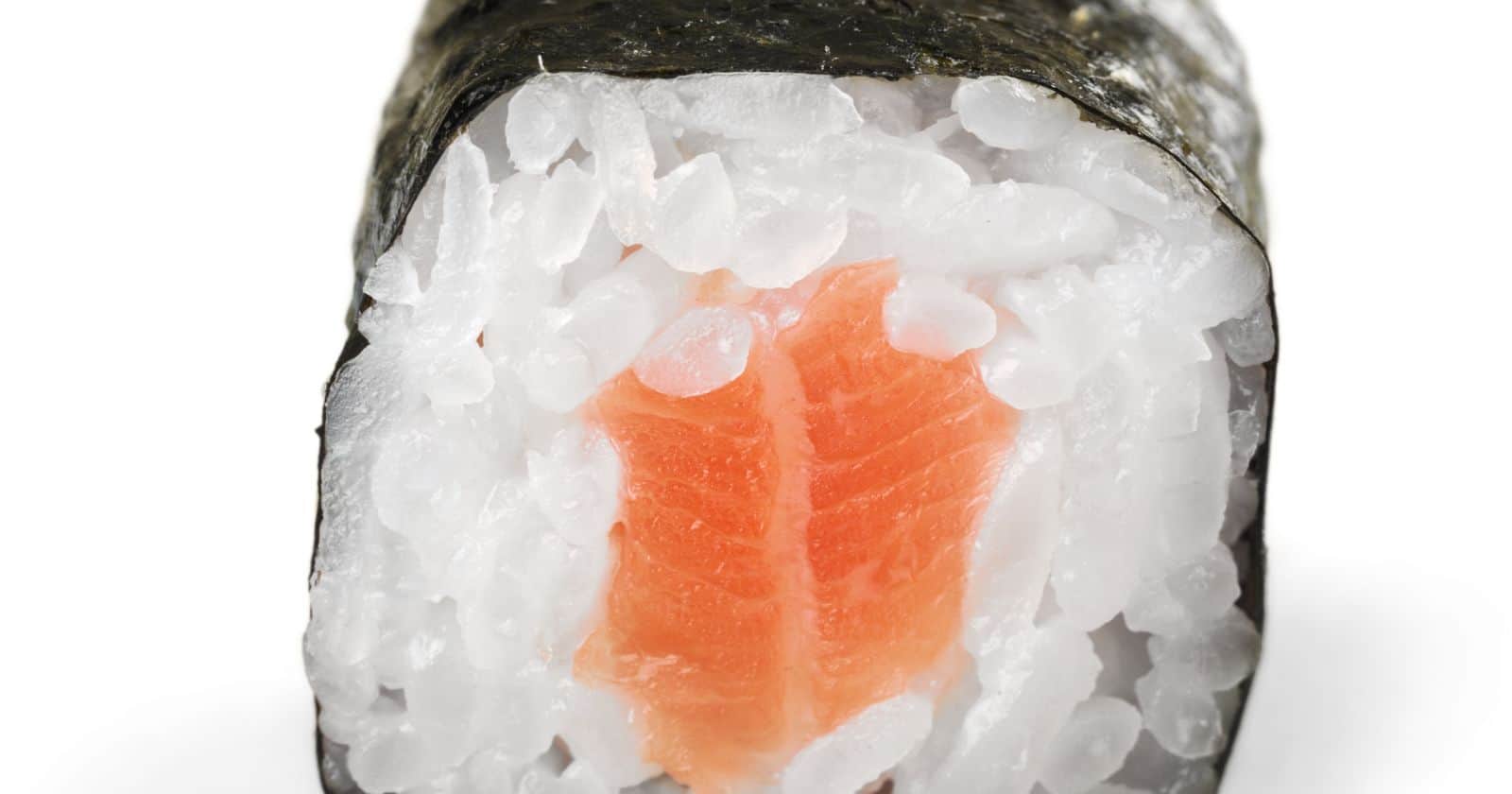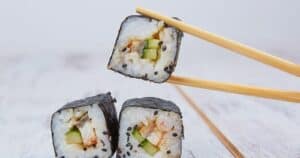Feeling ill after eating some sketchy sushi? Don’t panic – you’ve got options. First things first, stay hydrated and get some rest to help your body recover. If symptoms like nausea, vomiting, or diarrhea last more than two days, it’s doctor’s orders – get yourself checked out pronto. Fugu sushi acting up with numb lips or trouble breathing means it’s time to get to the E.R. – don’t delay.
Going forward, prep sushi at home the safe way. Give all kitchen surfaces a good scrub, keep separate cutting boards for meats and veggies, and wash those hands, before AND after handling raw fish. Store raw proteins far away from ready-to-eat foods in the fridge. When dining out, choose healthy sushi with fish, veggies, and seaweed. Pass on anything fried or dripping in mayo-laden sauces.
In summary, a bad sushi reaction can be managed by staying hydrated, getting rest, seeing a doctor if needed, following food safety rules, and opting for healthier rolls. Stick with me as I dive deeper into managing food poisoning, safe sushi practices, and how to choose healthy sushi menus. Let’s get rolling!
If You Have Common Food Poisoning Symptoms
If you’re experiencing nausea, vomiting, diarrhea, or stomach cramps after eating sushi, you likely have regular old food poisoning. Follow these tips to bounce back quickly:
Stay Hydrated
When you have food poisoning, dehydration can happen fast. Drink plenty of fluids like water, broth, or electrolyte drinks. Try to get in at least 8 ounces every 30 minutes. The fluids help flush toxins out of your system.
Get Plenty of Rest
Being sick is exhausting. Go ahead and sleep as much as your body needs to recover. Don’t push yourself to get things done. Your health comes first.
See a Doctor If Symptoms Last Over 48 Hours
Most basic food poisoning starts clearing up within 24-48 hours. But if you still have nausea, vomiting, diarrhea or stomach cramps after 2 days, it’s time to call your doctor. They can provide medications to relieve your symptoms or treat any underlying infection causing the illness.
If You Have Serious Symptoms After Eating Fugu
Fugu, or pufferfish, sushi can contain lethal toxins if improperly prepared. Seek emergency care right away if you develop:
- Numbness or tingling in the lips, mouth or face
- Difficulty breathing
- Muscle paralysis
- Dizziness
These are signs you may have ingested tetrodotoxin, a dangerous neurotoxin found in fugu fish. Swift medical treatment is needed to prevent respiratory failure.
How to Prevent Foodborne Illness from Sushi
Once you’ve recovered, follow these food safety rules to avoid getting sick again:
Clean Surfaces and Utensils Thoroughly
- Wash countertops, cutting boards, knives, and hands with hot soapy water before and after prepping sushi.
- Use separate cutting boards and utensils for raw seafood and ready-to-eat foods.
Store Raw Fish Properly
- Keep raw fish chilled at under 40°F until ready to use.
- Don’t let raw proteins like fish or meat touch or drip juices on other foods in the fridge.
Handle Raw Seafood Carefully
- Thaw frozen fish safely in the fridge, not on the counter.
- Wash hands for 20 seconds with soap before and after handling raw seafood.
Cook Rice and Fish Thoroughly
- Cook rice to 165°F to kill bacteria.
- Heat fish to 145°F. Use a food thermometer to verify temperatures.
Choose Safer Menu Options
Stick to sushi rolls containing:
- Cooked seafood like shrimp, crab or smoked salmon
- Vegetables like cucumber, avocado or asparagus
- Traditional items like tuna or salmon sashimi
Avoid tempura rolls with fried seafood or produce. And pass on sauces with mayo, which can harbor bacteria.
How to Order Healthier Sushi
Beyond basic food safety, you can choose nutritious sushi options to promote good health. Follow these tips when reading sushi menus:
Opt for Lean Proteins
- Salmon, tuna, yellowtail, snapper and shrimp offer protein while being lower in saturated fat.
- Limit fattier fish like mackerel, bluefin tuna or fatty tuna.
Load Up on Veggies
- Avocado, cucumber and asparagus provide vitamins, minerals and fiber.
- Beware fried veggies, which add unnecessary calories and fat.
Include Seaweed
Seaweed wraps and garnishes add antioxidants and iodine. But don’t overdo it – seaweed is high in sodium.
Avoid Fried Items
Tempura or fried rolls pack extra calories, fat and sodium. Opt for non-fried instead.
Limit Creamy Sauces
Spicy mayo, eel sauce and masago sauces are high in saturated fat and sodium. Get sushi without or ask for sauce on the side.
Mind Portion Size
It’s easy to overeat with bite-sized sushi. Stick to a hand roll or 6-8 pieces of rolls as one portion.
Sample Healthy Sushi Orders
Here are some balanced sushi orders to try on your next visit:
- Tuna or salmon sashimi – protein without carbs or sauces
- Shrimp and avocado roll – lean protein with healthy fats
- Cucumber and asparagus roll – veggie option with fiber
- Yellowtail and cucumber hand roll – contains 1-2 ounces fish
The Bottom Line
Accidentally eating some bad sushi happens. Hydrating, resting, and seeking medical care if needed can help you recover quickly and safely. Take steps to handle seafood properly at home. And choose healthier sushi when dining out to reap all the nutritional benefits while avoiding pitfalls. With some care and common sense, sushi can be part of a balanced diet.





